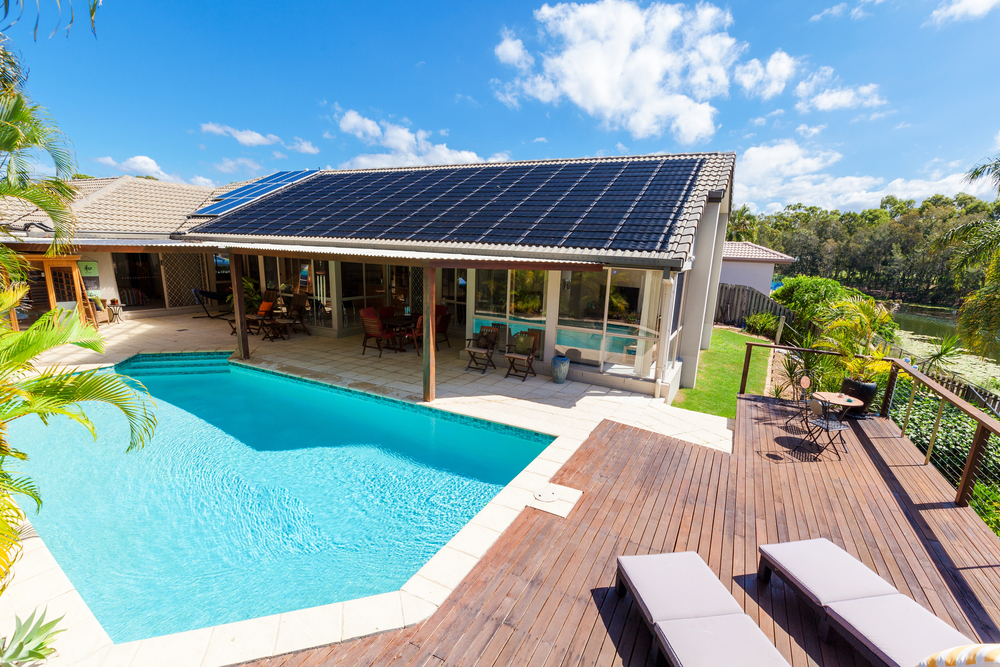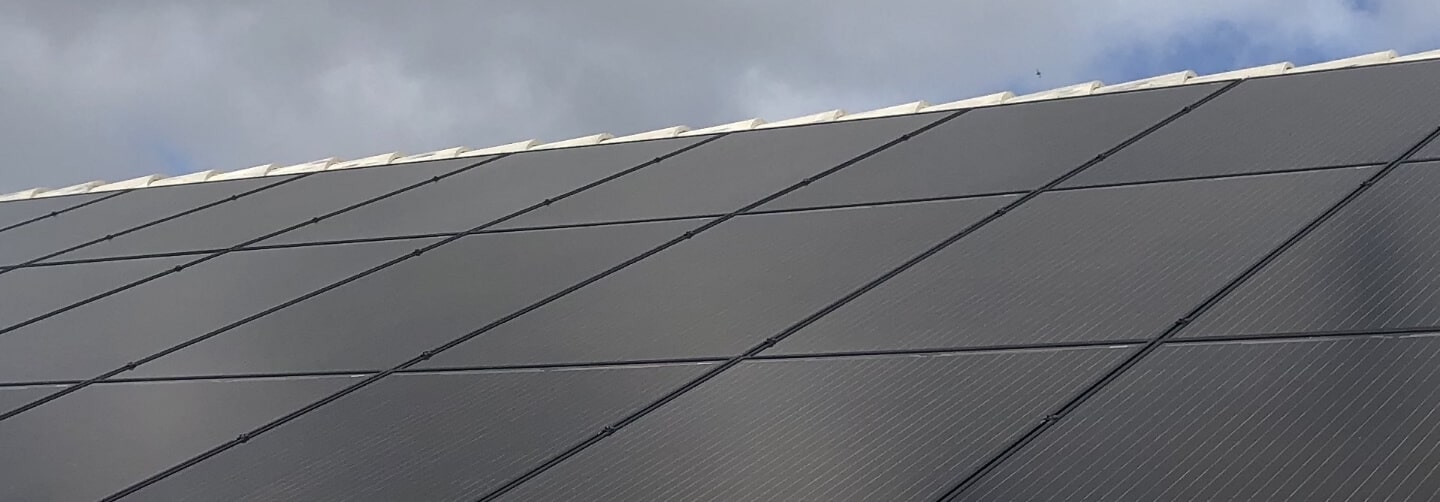How Many Solar Panels Are Needed To Heat A Pool?

If you are thinking about heating your pool with solar energy, you might be wondering how many solar panels are needed to heat a pool effectively. Understanding the factors that influence the number of panels you need can help you design an efficient solar heating system.
Solar pool heaters are an excellent way to keep your pool warm while reducing your energy bills and minimizing environmental impact. Let us walk you through the key factors to consider and help you determine how many panels are right for your pool.
Key Factors That Determine How Many Solar Panels Are Needed
When determining how many solar panels are needed to heat a pool, several factors come into play. These factors include your pool’s size, the amount of sunlight your area receives, the type of solar panels you choose, and your desired water temperature. Let us break down each of these factors.
- Pool Size and Surface Area
The larger the pool, the more energy it will take to heat it. The first step in calculating the number of solar panels required is determining your pool’s surface area. A larger surface area will need more solar panels to effectively absorb and convert enough sunlight into heat.
To calculate your pool’s surface area, you can use simple formulas:
- For a rectangular pool, calculate the area by multiplying its length by its width.
- For a circular pool, calculate the area using the formula π (pi) times the square of the radius.
Once you have the surface area of your pool, this gives you a clearer idea of the solar panel coverage required.
- Desired Temperature and Heating Goals
The next factor to consider is the temperature you want to maintain in your pool. In general, solar panels will raise the temperature of your pool by a few degrees per day, depending on factors such as climate and solar panel efficiency. If you live in a region with colder temperatures or want to extend your swimming season, you may need more solar panels to achieve the desired heating.
For instance, if you are looking to raise the temperature by 10-15°F, you may need a higher number of panels to produce enough heat. For warmer climates, fewer panels might suffice to maintain comfortable swimming temperatures.
- Climate and Sunlight Exposure
Your location plays a major role in determining how many solar panels you need. If you live in an area with abundant sunshine, your solar panels will be more efficient, meaning fewer panels are needed to heat your pool. However, if you live in a cloudier or cooler climate, you might need more panels to achieve the same heating effect.
Typically, areas with at least four to six hours of direct sunlight per day will require fewer panels compared to regions with less sun exposure. You should also consider the angle and orientation of your panels for optimal sunlight absorption.
- Solar Panel Efficiency
The efficiency of the solar panels you choose will also impact how many are needed. Monocrystalline panels, while more expensive, are the most efficient type, meaning you need fewer panels to heat your pool effectively. Polycrystalline panels are slightly less efficient but are more affordable. Thin-film panels are typically the least efficient and require more space to produce the same amount of energy as other types.
When considering solar pool heaters, it is important to strike a balance between panel efficiency and the available space for installation.
Calculating How Many Solar Panels You Need
Once you understand the key factors that affect solar pool heating, you can start calculating how many solar panels are required for your pool. Here is a more detailed guide to help you make an informed decision:
- Determine Your Pool’s Surface Area
The first step is to calculate the surface area of your pool in square feet. The larger the pool, the more energy it will take to heat. For example, if you have a pool that is 20 feet by 40 feet, the total surface area would be 800 square feet.
- Calculate the Panel Coverage Needed
The amount of solar panel coverage needed typically ranges from 50% to 100% of your pool’s surface area. The percentage depends on the climate you live in and the temperature you want to maintain. In areas with milder temperatures, 50% of the pool’s surface area might be enough. In cooler climates or if you plan to extend your swimming season, 100% coverage may be necessary.
For instance, for a pool with 800 square feet of surface area, you would need between 400 to 800 square feet of solar panel coverage, depending on the desired heat level and climate.
- Account for Panel Size
The size of the solar panels used will also affect the number of panels needed. A typical solar panel for pool heating measures about 4 feet by 12 feet, offering 48 square feet of coverage per panel.
For 50% coverage, you would need approximately 8 panels. For 100% coverage, you would need around 17 panels. The exact number will vary based on the specifics of your system and location.
Other Considerations for Heating Your Pool with Solar
- Roof Space and Mounting Options
The available space on your roof for mounting solar panels is an important factor in how many panels you can install. If you do not have enough roof space, ground-mounted solar panels or solar carports are viable alternatives. These systems can be installed in a location with optimal sun exposure to generate enough energy.
- Panel Placement and Orientation
For maximum efficiency, solar panels should be installed at an angle that captures the most sunlight. In the Northern Hemisphere, panels should face true south and be tilted to match the angle of your latitude. If you are installing panels on a roof with limited orientation options, microinverters or power optimizers can help maximize energy production.
- Pool Cover for Efficiency
Using a pool cover can drastically improve the efficiency of your solar pool heating system. A pool cover prevents heat from escaping, reduces evaporation, and minimizes the need for additional heating. It is particularly useful for keeping your pool warm at night or on cooler days, helping you make the most of your solar system.
Additional Solar Solutions for Residential Homes
While heating your pool with solar power is a great use of solar energy, you can also consider other solar-powered solutions to increase your home’s overall energy efficiency:
- Solar Pool Heaters
A solar pool heater is a key part of a solar heating system, using the sun’s energy to keep your pool warm without relying on gas or electric heaters. These systems are cost-effective and environmentally friendly, reducing both your energy consumption and pool heating costs.
- Solar Attic Fans
Another way to enhance your home’s energy efficiency is by installing solar attic fans. These fans use solar energy to ventilate your attic, preventing excessive heat buildup and reducing the load on your air conditioning system. Solar attic fans are an excellent addition to any home with solar panels, contributing to overall energy savings.
Determining how many solar panels are needed to heat a pool depends on several factors, including your pool’s size, local climate, desired temperature, and panel efficiency. By considering these elements, you can calculate the number of panels needed for an efficient solar pool heating system.
At Solar Energy Solutions of America, we specialize in residential photovoltaic solar electric systems and solar pool heaters, helping homeowners reduce their energy costs and environmental impact. We are here to guide you through the process, from design to installation, making sure you make the most out of solar energy for your pool and home.
